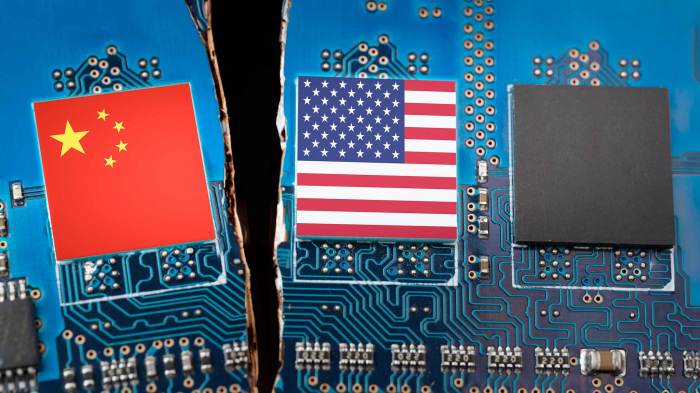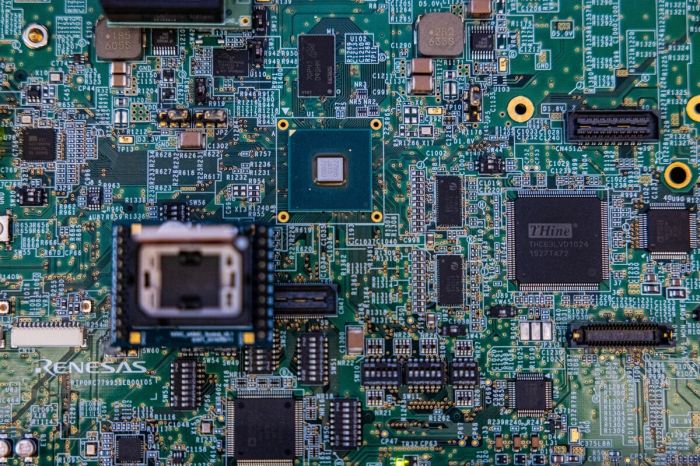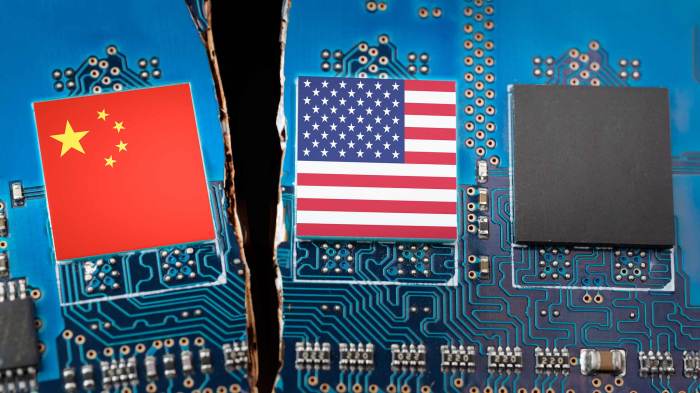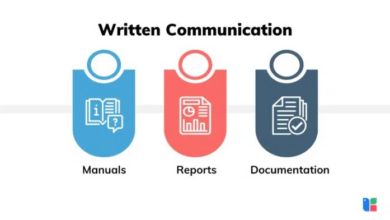
Biden AI chip export restrictions are poised to reshape the global AI landscape. These new regulations target specific AI chips, impacting not only US companies but also global innovation and international relations. The restrictions, stemming from security concerns, are prompting debate about their potential unintended consequences and alternative approaches.
This analysis delves into the background of these restrictions, exploring the rationale behind them, their potential economic and geopolitical implications, and the various responses they might evoke. We’ll examine the potential for international collaboration, as well as potential conflicts. Ultimately, the discussion will consider alternative solutions that balance security concerns with economic interests.
Background on Biden’s AI Chip Export Restrictions

The Biden administration’s recent actions regarding AI chip export restrictions represent a significant shift in the US approach to controlling the flow of advanced technology. This move, building on a long history of export controls, seeks to balance national security concerns with the imperative to foster innovation and maintain a competitive edge in the global tech landscape. The specifics of these restrictions, and their potential consequences, are crucial to understanding the implications for the future of AI development and global competitiveness.The US has a long history of regulating the export of sensitive technologies, primarily for national security reasons.
This history includes export controls on everything from nuclear materials to advanced semiconductors. The current context, however, brings a heightened awareness of the potential for AI to reshape warfare, economics, and daily life. This heightened awareness is a key factor behind the recent measures.
Historical Overview of US Export Controls
The US government has implemented export controls on various technologies throughout its history, aiming to protect national security interests. These controls have evolved over time, adapting to changing geopolitical landscapes and technological advancements. Early controls often focused on military applications, but as technology advanced, the scope broadened to encompass technologies with dual-use capabilities, meaning they have both civilian and military applications.
This evolution reflects a growing recognition of the potential for sensitive technologies to be misused. For instance, export controls on certain types of microprocessors have existed for decades, evolving to address the sophistication of both the technology and the potential threats.
Types of AI Chips Affected by the Restrictions
The restrictions target specific types of AI chips, those with advanced capabilities in areas like deep learning and high-performance computing. These chips, often based on specific architectures or employing cutting-edge semiconductor technologies, are crucial for developing and deploying sophisticated AI applications. This includes chips designed for tasks like image recognition, natural language processing, and complex simulations. These restrictions are not broad-based but focus on particular capabilities and functionalities within the AI chip space.
Rationale Behind the Biden Administration’s Decision
The Biden administration’s rationale for imposing these restrictions is multifaceted. Concerns about the potential for malicious actors to exploit advanced AI capabilities for military or espionage purposes are a major factor. Further, the administration aims to maintain a competitive edge in AI development, preserving US leadership in this critical technological field. The strategic intent is to safeguard national security interests while simultaneously nurturing US technological dominance in the face of global competition.
Potential Unintended Consequences of the Restrictions
The restrictions may stifle innovation by limiting access to critical components and expertise for researchers and companies. It might also hinder the development of beneficial AI applications in areas like healthcare, agriculture, and scientific research. Moreover, the restrictions could lead to a shift in AI development to other nations, potentially accelerating their technological advancements in this critical field.
This is a complex issue with numerous variables that must be considered.
Comparison of AI Chip Export Restrictions with Previous Measures
| Feature | Previous Controls | Current Controls |
|---|---|---|
| Target Technologies | Generally focused on specific military applications and components with dual-use potential; less comprehensive in scope. | Targets specific AI chip architectures and capabilities, encompassing deep learning and high-performance computing. |
| Justification | Predominantly centered on preventing the proliferation of military technologies and maintaining national security. | Combines national security concerns with maintaining a competitive edge in the development and application of AI. |
| Impact on Industry | Limited impact, largely concentrated in specific sectors. | Potentially wider impact on the AI sector, potentially affecting both research and commercial applications. |
The table above provides a comparative overview of past and present US export control measures, highlighting the distinctions in targeted technologies, justification, and industry impacts. The table illustrates the evolving nature of export controls in response to technological advancements and geopolitical considerations.
Impact on Global AI Development
The Biden administration’s recent restrictions on the export of advanced AI chips have sent ripples through the global tech landscape. These measures, aimed at safeguarding US technological dominance, are expected to have significant consequences for the development and deployment of AI globally. The impact will be felt not just in the immediate supply chain, but also in the long-term trajectory of AI innovation.The global AI chip industry is highly competitive, with several key players vying for market share.
This intricate web of partnerships, collaborations, and competition is now significantly altered by these new export regulations. The repercussions on innovation, investment, and the overall global technological ecosystem remain to be fully understood.
Key Global Players in the AI Chip Industry
Several countries and companies are at the forefront of AI chip development and manufacturing. Taiwan Semiconductor Manufacturing Company (TSMC), a leading foundry, plays a pivotal role in the supply chain. US companies like Nvidia and AMD are major players in the design and production of high-performance chips. Furthermore, companies in China, such as SMIC, are aggressively pursuing self-sufficiency in AI chip manufacturing.
The complex interplay between these companies and governments is essential to understanding the impact of these export controls.
Potential Consequences of Restrictions on Global Innovation
The restrictions on AI chip exports could significantly slow the development of AI capabilities worldwide. Access to cutting-edge technology is crucial for progress in areas like machine learning, deep learning, and artificial general intelligence. Restricting access to advanced chips can create a bottleneck in innovation, potentially delaying the development of crucial applications in diverse fields, from healthcare to autonomous vehicles.
For example, researchers in countries reliant on imported chips might find it challenging to advance their projects, hindering the advancement of AI solutions for global challenges.
Possible Responses from Other Countries to the Restrictions
Several countries are likely to respond to the US restrictions in various ways. Some might accelerate their own development programs in AI chip manufacturing, aiming for greater independence from US technology. Others may seek alternative sources for the necessary components. This competitive dynamic will shape the future of the global AI landscape. For instance, China might increase investment in its own chip industry to reduce reliance on foreign technology.
Impact on Different Regions of the World
The impact of these restrictions will vary across different regions. Asia, particularly countries like South Korea and Japan, are heavily reliant on advanced chip technology, and could face disruptions to their own AI development projects. Europe, with its growing AI sector, might experience delays in the advancement of AI projects dependent on imported chips. The US, while attempting to maintain its edge, may also face unforeseen consequences in its own innovation ecosystem if other countries establish strong alternatives.
Potential Shift in Global AI Chip Manufacturing
The table below illustrates a potential shift in global AI chip manufacturing, showing current dominance and a possible future scenario. This is a dynamic situation, and the actual outcomes may differ.
| Region | Current Dominance | Potential Shift |
|---|---|---|
| Asia | Significant presence in foundry services (e.g., TSMC), but dependence on advanced US designs. | Potential increase in domestic chip design and manufacturing capacity, potentially fostering greater regional collaboration and potentially facing challenges in access to advanced designs. |
| Europe | Limited presence in advanced chip manufacturing. | Potential investment and development in advanced chip manufacturing, potentially driven by a desire for greater independence and attracting international investment. |
| US | Dominance in chip design, but reduced presence in foundry services. | Maintaining a strong design position, but potentially facing challenges in maintaining global leadership if other regions establish more robust and independent AI chip ecosystems. |
Economic Implications of the Restrictions: Biden Ai Chip Export Restrictions

The Biden administration’s AI chip export restrictions aim to curb the advancement of certain technologies in rival nations. However, these actions carry significant economic implications for both the United States and the global community. The restrictions will likely impact the competitiveness of US companies in the rapidly evolving AI market and may also reshape the global semiconductor landscape.
Potential Economic Costs for US Companies
US companies heavily reliant on advanced semiconductor technology face potential disruptions. Companies in sectors like consumer electronics, cloud computing, and automotive are likely to experience increased production costs and reduced profitability. Reduced access to cutting-edge components could hinder innovation and lead to delays in product development. The long-term effect on US competitiveness in these fields is uncertain but could be substantial.
For example, a delay in producing new smartphone models with AI-enhanced features could translate into significant lost revenue for US tech giants.
Potential Economic Benefits to Other Countries
The restrictions could create opportunities for other nations to increase their market share in the semiconductor and AI industries. Countries with robust domestic semiconductor manufacturing capabilities, or those with strong research and development programs in AI, may benefit from the increased demand. Companies in these nations could potentially attract investment and experience accelerated growth as a result of the US restrictions.
Biden’s AI chip export restrictions are a hot topic, but it’s interesting to consider how these tech policies might indirectly affect other health areas. For example, research into shingles vaccines and their potential link to dementia, as discussed in this article on shingles vaccine dementia christopher worsham anupam jena , could be impacted by global chip supply chain issues.
Ultimately, the ripple effects of these export restrictions on everything from medical breakthroughs to cutting-edge tech remain to be seen.
For instance, South Korea’s strong semiconductor sector might experience increased demand and investment.
Impact on the Global Semiconductor Supply Chain
The export restrictions could disrupt the global semiconductor supply chain. The restrictions are likely to lead to shortages of specific components, forcing companies to find alternative sources. This could increase production costs and decrease efficiency across the board. The interconnected nature of the supply chain means that disruptions in one area can quickly ripple through other sectors.
A global shortage of specific AI chips could force manufacturers to delay production or change their product designs.
Potential Ripple Effects on Related Industries
The restrictions’ effects extend beyond the semiconductor industry. Related industries like consumer electronics, cloud computing, and automotive will also be affected. For example, if automotive manufacturers cannot access necessary AI chips for self-driving technology, it could lead to delays in the development and release of new models. These ripple effects could have a significant impact on economic growth and employment across numerous sectors.
Biden’s AI chip export restrictions are definitely grabbing headlines, but it’s fascinating to consider how our technological advancements might pale in comparison to what’s out there. For instance, recent discoveries about water rivers and beaches on Mars, rivaling Earth’s in some respects, like this article highlights , makes you wonder about the bigger picture. Perhaps these restrictions are less about dominating the technological landscape and more about a broader strategy for navigating the global tech race.
Ultimately, the restrictions still have significant implications for the future of AI development.
Impact on Different Sectors
| Sector | Potential Impact | Example |
|---|---|---|
| Consumer Electronics | Increased production costs, potentially delayed or modified product releases, decreased competitiveness in the global market. | Smartphones with reduced AI features, higher prices for consumer electronics. |
| Cloud Computing | Higher costs for cloud services, reduced efficiency in AI-driven applications, potential shift in cloud computing infrastructure to other regions. | Increased costs for cloud storage and AI-based services, possible relocation of cloud data centers to regions outside the US. |
| Automotive | Delayed development of autonomous vehicles, reduced efficiency in self-driving features, higher costs for vehicles. | Delayed release of autonomous vehicle models, higher prices for vehicles equipped with AI-based driver-assistance systems. |
Potential for International Collaboration and Conflict
The Biden administration’s AI chip export restrictions have ignited a complex global debate. While aiming to safeguard national interests and potentially foster domestic innovation, these restrictions have significant implications for international collaboration and potentially spark conflicts. The intricate web of technological interdependence and competing national priorities creates a volatile landscape, demanding careful consideration of potential outcomes.These restrictions, designed to limit the flow of advanced AI chips to certain countries, raise significant questions about the future of global AI development.
Will this lead to a fragmentation of the AI industry, with some nations forging ahead while others are left behind? Or will it foster a new era of international cooperation and shared standards? The answers to these questions are not straightforward and depend on a variety of factors, including the reactions of other nations, the nature of international agreements, and the strategies employed by various actors.
Potential for International Cooperation on AI Development
The development of AI is a complex process that often requires international collaboration. Sharing knowledge, resources, and expertise can accelerate innovation and potentially mitigate risks. For example, joint research initiatives and the development of shared datasets can significantly advance the field. International collaborations can also help establish common standards and ethical guidelines for AI development.
Potential Areas of Conflict or Tension
These restrictions create several potential areas of tension. Countries reliant on American technology for AI development may face economic hardship or be forced to seek alternative sources. This could lead to trade disputes, political tensions, and even security concerns. Furthermore, the restrictions might incentivize other nations to develop their own AI chip manufacturing capabilities, potentially accelerating a global arms race in this field.
This race could exacerbate existing geopolitical tensions.
Potential Strategies to Mitigate International Tensions
International cooperation and clear communication are essential to mitigating these tensions. Countries should engage in open dialogue to understand each other’s concerns and potential compromises. Negotiating international agreements and establishing clear guidelines for AI development can foster trust and prevent unintended consequences.
Examples of Past International Agreements Related to Technology Control
Past international agreements, such as those related to nuclear proliferation or the control of certain weapons technologies, provide precedents for managing sensitive technologies. These agreements demonstrate the possibility of international cooperation in regulating potentially disruptive technologies. Careful study of these precedents can inform strategies for managing the potential risks associated with AI development.
Different Approaches Various Countries Might Take
Different countries are likely to adopt diverse approaches in response to these restrictions. Some may retaliate with their own export controls, while others may seek alternative sources of advanced technology or invest heavily in their domestic AI chip manufacturing. The actions of various countries will depend on their individual national interests, technological capabilities, and geopolitical strategies. Some countries may form alliances to counter the restrictions, potentially creating new economic and political blocs.
Alternative Approaches and Solutions
The recent US export restrictions on advanced AI chips have sparked a global debate about the future of AI development. These restrictions, while aimed at safeguarding national security, also carry potential economic consequences and may hinder collaborative advancements. Alternative approaches are crucial for fostering US leadership in AI while mitigating these risks.Addressing the security and ethical implications of AI requires a multifaceted strategy that goes beyond export controls.
This includes investments in domestic research, international cooperation, and the development of ethical guidelines for AI development and deployment. A balanced approach that considers both security and economic interests is essential for long-term prosperity and innovation.
International Cooperation Strategies
Promoting international collaboration on AI standards and ethical guidelines is vital. Shared research initiatives and knowledge-sharing platforms can foster innovation while mitigating potential security risks. This can include joint research projects, development of common testing and validation procedures, and the establishment of international forums for discussing AI safety and ethics. Examples include the EU’s Horizon Europe program, which funds collaborative research across member states.
Open data initiatives and collaborative efforts to develop secure AI algorithms are critical for addressing security and ethical concerns.
Increased Domestic Investment Strategies
Boosting domestic investment in AI research and development is crucial for maintaining US leadership. This includes funding for universities, research labs, and startups. Financial incentives and tax breaks can encourage companies to invest in AI research and development, fostering innovation and creating jobs. Government support for the development of next-generation AI infrastructure and talent development programs can bolster the US’s competitive edge in the global AI market.
This is exemplified by the US government’s investment in the National Science Foundation’s AI research programs, and similar initiatives across the country.
Biden’s AI chip export restrictions are definitely a hot topic right now, but there are other significant events unfolding. For example, police are investigating an arson attack on Pennsylvania Governor Josh Shapiro’s residence, which is quite concerning. This incident, as reported by this news outlet , highlights the current climate of political tension, which might have an unexpected ripple effect on the ongoing discussions around AI chip export controls.
The potential impact on global chip supply and the broader implications of these restrictions remain to be seen.
Balancing Security Concerns with Economic Interests
A nuanced approach is needed to balance the security concerns surrounding AI with the economic benefits of technological advancement. This includes developing clear and transparent guidelines for AI research and development that ensure security without stifling innovation. Collaboration with international partners on security standards and ethical guidelines can facilitate this balance. This could involve creating a tiered approach to export controls, differentiating between research tools, development platforms, and deployed systems based on potential risks.
Existing International Collaborations on Technology, Biden ai chip export restrictions
International collaborations are not new. The International Space Station, a joint project of multiple countries, exemplifies successful cooperation on a large-scale technological project. The development of the internet, while not a single entity, relied on the combined efforts of numerous researchers and developers worldwide. Such examples highlight the potential for similar collaborative efforts in the field of AI.
The development of global standards for cybersecurity and data privacy can benefit from international cooperation, fostering trust and collaboration across borders.
Table of Solutions
| Solution | Pros | Cons |
|---|---|---|
| International Cooperation | Fosters innovation, mitigates security risks, promotes ethical development | Requires trust and agreement on standards, potential for disagreements |
| Increased Domestic Investment | Boosts national competitiveness, creates jobs, strengthens domestic expertise | Can be costly, potential for bureaucratic hurdles, may not address global challenges |
Technical Details of Affected AI Chips
The Biden administration’s export restrictions on advanced AI chips target specific technologies crucial for the development of powerful artificial intelligence systems. Understanding the technical specifics of these chips is key to comprehending the implications of these restrictions. This section dives into the characteristics, architectures, and manufacturers of these chips, highlighting the nuances of the targeted technologies.
Key Technical Features of Targeted AI Chips
The AI chips under restriction possess advanced processing capabilities, particularly in areas like deep learning and large language models. These features enable them to perform complex calculations and handle vast amounts of data far more efficiently than previous generations of processors. This speed and efficiency are critical for tasks such as image recognition, natural language processing, and predictive modeling.
AI Chip Architectures and Functionality
These chips employ specialized architectures optimized for parallel processing, allowing them to handle multiple tasks simultaneously. A common architecture utilizes tensor cores, which are specifically designed to accelerate operations essential for machine learning algorithms. The functionality extends beyond raw processing speed; these chips are often integrated with memory systems and specialized interfaces that work in concert to support rapid data transfer and processing.
This holistic approach allows for extremely efficient and powerful AI operations.
Leading Manufacturers of AI Chips
Several prominent companies manufacture these cutting-edge AI chips. Among the leaders are Nvidia, with its powerful GPUs optimized for deep learning; AMD, with its diverse range of processors encompassing both CPUs and GPUs with AI capabilities; and Google, with its custom-designed Tensor Processing Units (TPUs) specifically tailored for machine learning tasks. These companies have significant market share and influence within the industry.
Comparison of AI Chip Technologies
A detailed comparison reveals notable differences in the architectures and capabilities of various AI chips. Nvidia GPUs, for instance, excel in tasks involving high-dimensional data and complex calculations, making them popular for training deep learning models. TPUs, on the other hand, are highly optimized for specific machine learning workloads, often demonstrating better efficiency for particular tasks. AMD chips offer a broader range of performance options, catering to different needs within the AI ecosystem.
| Chip Type | Architecture | Strengths | Weaknesses |
|---|---|---|---|
| Nvidia GPUs | General-purpose computing on graphics processing units | High performance, versatile | May not be optimal for specific ML tasks |
| AMD CPUs/GPUs | Hybrid approach, combining CPU and GPU | Broad range of performance, cost-effective | May not match the peak performance of specialized chips |
| Google TPUs | Custom-designed for machine learning | Exceptional efficiency for specific ML tasks | Limited versatility |
Specific Examples of Affected AI Chips
“Nvidia’s H100 GPU and AMD’s MI250X GPU are examples of chips impacted by the restrictions.”
Specific models from these manufacturers are often involved in the export controls, reflecting the sophisticated nature of the targeted technologies. These specific chipsets are crucial for the development and deployment of advanced AI systems in various applications, from autonomous vehicles to medical imaging.
Conclusive Thoughts
Biden’s AI chip export restrictions represent a significant policy shift with far-reaching consequences. The impact on global AI development, economic stability, and international relations will be profound. This discussion underscores the need for careful consideration of potential unintended consequences and the exploration of alternative solutions to ensure both security and prosperity.





